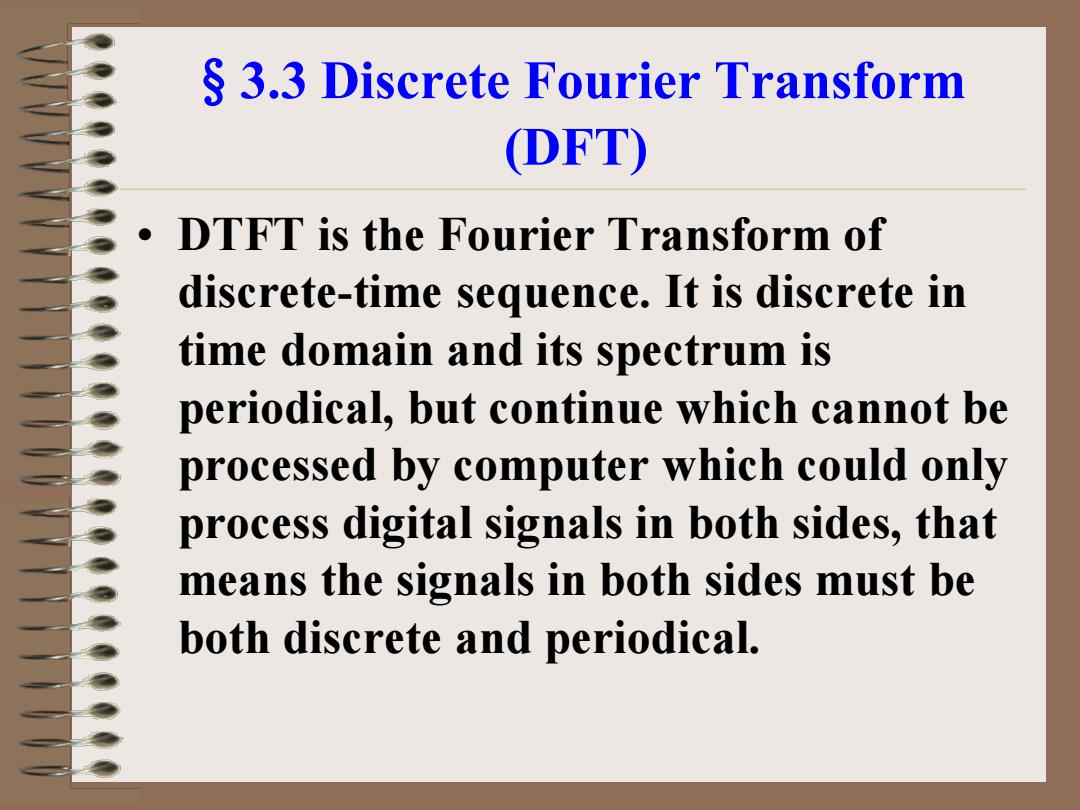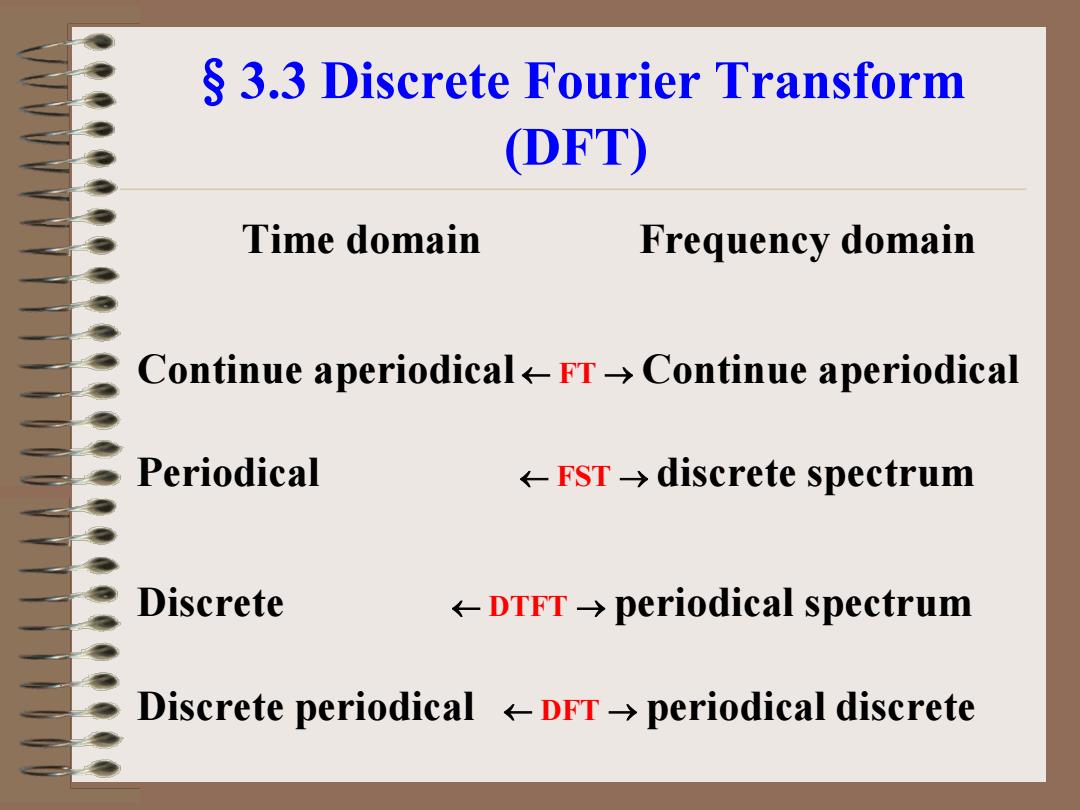
§3.2 DTFT Properties Type of Property Sequence DTFT gl叫 G(ej) h(n] H(ej) Linearity ag[n]+bh[n] aG(ej)+bH(ej) Time-shifting gIn-nol e-jnG(ej) Frequency-shifting e-jong[n] G(ei) Differentiation ng n] jdG(ei)/do Convolution g[n]*h[n] G(ej)H(i) Modulation g(nh[n] (e)e-d0 Parseval's relation &mlhM-2zJGe)H'eda 1=-00
§3.2 DTFT Properties Type of Property Sequence DTFT θ π ω θ π π θ G e H e d j j ( ) ( ) 2 1 ( − ) − ∫ ω π ω π π ω g n h n G e H e d j j n ( ) ( ) 2 1 [ ] [ ] * * ∑ ∫ − ∞ =−∞ Parseval’s relation = Modulation g[n]h[n] Convolution g[n]*h[n] G(ejω)H(ejω) Differentiation ng[n] jdG(ejω)/dω Frequency-shifting e-jω0ng[n] G(ej(ω- ω0) ) Time-shifting g[n-n0] e-jωn0G(ejω) Linearity ag[n]+bh[n] aG(ejω)+bH(ejω) h[n] H(ejω) g[n] G(ejω)

§3.2 DTFT Properties glnk-→G(ejo) Use the definition of G(ei)and differentiate both sides,we obtain Ge)-2-jmg[lem 00 1n=-o0 The right-hand side of this equation is the Fourier transform of-jng[n].Therefore,multiplying both sides by j,we see ngln←-→jdG(ei)/do
§3.2 DTFT Properties • g[n]←→G(ejω) • Use the definition of G(ejω)and differentiate both sides, we obtain ∑ ∞ =−∞ − = − n j n j jng n e d dG e ω ω ω [ ] ( ) The right-hand side of this equation is the Fourier transform of –jng[n]. Therefore, multiplying both sides by j, we see ng[n]←→jdG(ejω)/dω

S 3.3 Discrete Fourier Transform DFT) DTFT is the Fourier Transform of discrete-time sequence.It is discrete in time domain and its spectrum is periodical,but continue which cannot be processed by computer which could only process digital signals in both sides,that means the signals in both sides must be both discrete and periodical
§3.3 Discrete Fourier Transform (DFT) • DTFT is the Fourier Transform of discrete-time sequence. It is discrete in time domain and its spectrum is periodical, but continue which cannot be processed by computer which could only process digital signals in both sides, that means the signals in both sides must be both discrete and periodical

S 3.3 Discrete Fourier Transform (DFT) Time domain Frequency domain Continue aperiodical <FT>Continue aperiodical Periodical FST>discrete spectrum Discrete ←DTFT→periodical spectrum Discrete periodical <DFT->periodical discrete
§3.3 Discrete Fourier Transform (DFT) Time domain Frequency domain Continue aperiodical ← FT → Continue aperiodical Periodical ← FST → discrete spectrum Discrete ← DTFT → periodical spectrum Discrete periodical ← DFT → periodical discrete

Typical DFT Pair δm()←—→06m.(0) 00=2π/T 2T-T 0T 2T -200 -00 00 200 0 In DFT,the signals in both sides are discrete,so it is the only transform pair which can be processed by computer. The signals in both sides are periodical,so the processing could be in one period,which is important because (1)the number of calculation is limited,which is necessary for computer;(2)all of the signal information could be kept in one period,which is necessary for accurate processing
Typical DFT Pair δT(t) ←→ ω0δω0(ω) -2T -T T 2T δT(t) 0 t ω0 2ω0 - ω0 -2ω0 ω0δω0(ω) 0 ω ω0 = 2π/T ←→ • In DFT, the signals in both sides are discrete, so it is the only transform pair which can be processed by computer. • The signals in both sides are periodical, so the processing could be in one period, which is important because (1) the number of calculation is limited, which is necessary for computer; (2) all of the signal information could be kept in one period, which is necessary for accurate processing